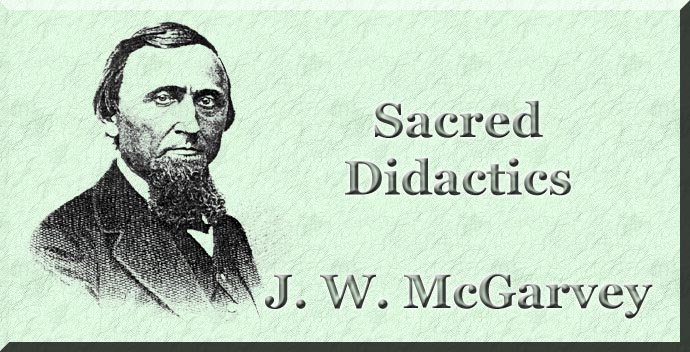STUDY OF
TOPICS
I. Sources of information
A. The scriptures for
inquiries confined to
scripture topics.
1. God should be
heard first. The fact
that he has seen fit to
say anything implies
that he should be heard.
B. Profane literature,
history and geography.
1. The first for
meanings of words. 2.
The second for manners,
customs and illustrative
events. 3. The third
for localities, climate,
productions, etc.
C. When any conflict
occurs, all must yield to
the Word of God.
II. Two Methods of Study.
A. The dogmatic consists
of getting thoughts for
reflections and searching
scriptures for proof to
support them.
1. Objections to this
method.
a. It is
presumption. It is
taking our own
"think-so" rather
than what God says.
b. Generally
incomplete. c.
Always unsafe.
B. The inductive method.
1. Get all statements
of scriptures and adopt
them as conclusions.
2. Draw from them all
necessary deductions.
("Necessary" means
logical.) 3.
Advantages of this
method.
a. It furnishes
all God sees fit to
say on the
subject—that is
enough. b. It
makes scriptures
form the
theory, rather than
conform to
it. c. When
preaching thus, we
are preaching the
Word,
C. Caution: The induction
must be complete. Partial
induction is unsafe for
other facts might reverse
the conclusion. (Note: We
have also the Mystic and
Rationalistic Methods. These
are not worthy of
discussion. The former is
almost obsolete.
(Swedenborgen and others.)
The latter is only used by
skeptics. It is used to
decide what part of the
Bible is of God. That is
skepticism.)
III. Rules: Inductive
Method.
A. Collect the individual
thoughts and facts of
scripture.
1. Process:
a. By concordance
and reading, find
all passages that
bear on the subject.
b. Apply to each the
rule of exegesis and
get its exact
thought. c. Write
them in the most
precise terms
possible.
2. Classify the
thoughts collected. This
is done:
a. By connection
of sequence (time.)
b. By logical
connection of cause
and effect or of
premise and
conclusion. c. By
connection of
association; i.e.,
or natural division
of question at
issue.
(1) These
classes of
thought
constitute the
divisions of
the subject.
B. Arrange the thoughts
of each division.
1. Observe same
connection as in rule 2.
2. Have reference to
connection of the
divisions. 3. Let the
last thought of each
division be connected
with the first thought
of the next division.
C. Arrange the division
of the topics.
1. This done as in
rule 2.
D. Obtain a connected
view of the whole subject.
1. This done by
reflection on each part
with reference to every
other part and with
reference to the whole.
2. Now proceed to write
or speak on the whole or
any part.
|



 Home
Home What's New
What's New Bible
Bible Photos
Photos Hiking
Hiking E-Books
E-Books Genealogy
Genealogy Profile
Free Plug-ins You May Need
Profile
Free Plug-ins You May Need
 Get
Java
Get
Java.png) Get Flash
Get Flash Get
7-Zip
Get
7-Zip Get Acrobat Reader
Get Acrobat Reader Get
TheWORD
Get
TheWORD